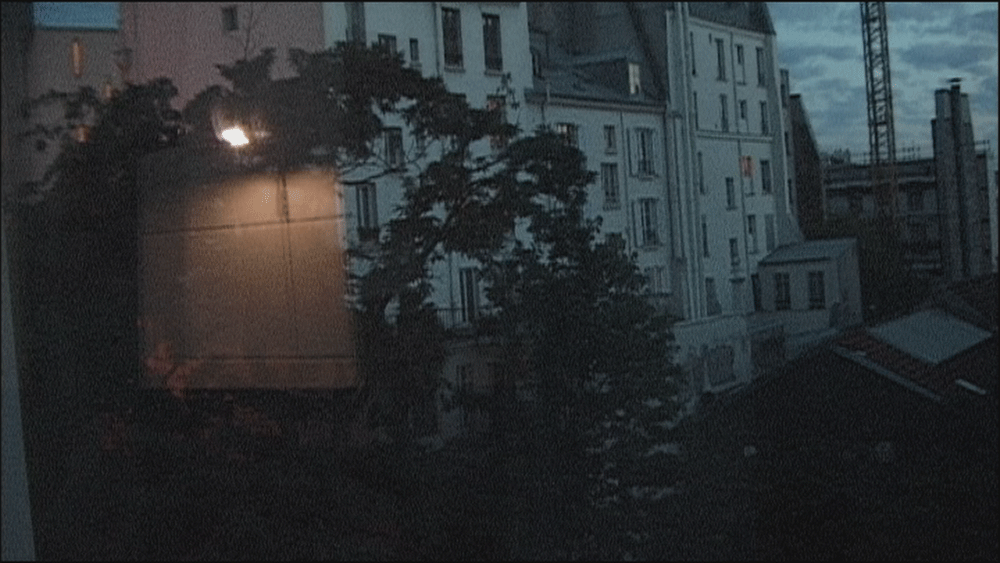Chantal Akerman
Galerie Marian Goodman, Paris, France
Galerie Marian Goodman, Paris, France

Chantal Akerman refers to the two video works in her exhibition ‘Maniac Summer’ as orphans. From an autobiographical perspective, this is especially poignant: the Belgian filmmaker’s mother, maternal grandparents, great-grandfather and great uncle – all Polish Jews – were sent to Auschwitz, where all of them except her mother perished. Akerman, an orphan’s daughter, has responded to this family history throughout her career; it is the eddy around which all her work swirls. In French, the word ‘orphan’ can also be used more prosaically to designate a paired object or article of clothing that has lost its partner, such as an ‘orphaned’ glove. Here it is a nod to the artist’s life, but also serves to differentiate Tombée de nuit sur Shanghaï (Nightfall in Shanghai, 2007) and Maniac Summer (2009) from her more narrative-led productions, as well as to reinforce distinctions between the two video installations as prelude and main event.
Tombée de nuit sur Shanghaï is Akerman’s contribution to the collective film L’état du monde (The State of the World, 2007), which includes short films on that subject by Pedro Costa, Vicente Ferraz, Wang Bing and Apichatpong Weerasethakul, commissioned by the Portuguese Calouste Gulbenkian Foundation. Projected just opposite the curtained entrance, the projection engulfed an entire wall of the pitch-dark ground-floor gallery with its scintillating lights and glistening harbour. In an essentially static shot from the shore – one of Akerman’s trademarks – boats and passers-by occasionally traverse the frame, but they are mere blips on a screen pulsating – appallingly, seductively – with the incessant wink and blink of Shanghai’s skyline and the pixelated images on its colossal LED ‘billboards’. Akerman’s full-frontal projection shows quite bluntly (and without cinematic fanfare) how the image is no longer built into the architectural fabric of the city, but rather swarms all over its surface like an army of luminous insects gathering visual information, reproducing the Mona Lisa here or a beverage advertisement there. Akerman is critical of this proliferating tendency to reduce all images, regardless of their provenance, to equivalent, decorative signs – an expansion of the image realm that is paradoxically idolatrous (to cite Akerman directly) and iconoclastic. Akerman dryly mocks this age-old impulse to worship and destroy by placing two kitschy, aquarium-shaped animated lamps on the floor, like the glowing predella of some filmic altarpiece, which provides an underwater glimpse of bright fish and other sea creatures swimming in an illusion of the sea.
If a critical ambivalence can be said to characterize Akerman’s vision of the state of the world, a more intimately structural contradiction presides over Maniac Summer. Filmed during a period Akerman has described in clinical terms as ‘manic’, avowing she suffers from manic-depressive disorder, Maniac Summer comprises a single-channel video, twin video diptychs and a third diptych, projected in clockwise order against three of the basement gallery walls and ‘encircling’ a bench placed against the fourth wall. The work is documentary only in that it is entirely composed of footage shot inside and from the vantage point of Akerman’s Paris flat, from a camera posed and left to run while trained on rooms or out of a window (and, in this way, it is a pendant to her film Là-bas [Down There, 2006], shot in Tel-Aviv, when she was incapable of venturing outside). In all instances, the camera observes and records activities on the street or across the way in the park; Akerman herself pottering about, eating yoghurt and smoking. Exterior and interior ambient sounds provide the soundtrack and a counter ticks away the hours on the screen until she changes the videotape or moves the camera.
Whereas the central video straightforwardly represents fragments of the everyday, the frieze of diptychs occupies more metaphorical territory. Images from the main video are isolated, montaged, repeated and manipulated; they are bled of their colours until they turn a burnished gold, then solarized and rendered progressively more abstract until resemblances lapse into total misrecognition. These images play tricks on your eyes, force you to try to recall, to look back toward the film, to confirm what you think you have seen. Flashes of light, as if from an explosion, leave phantom remains. Occasionally, an entire diptych panel drops down a level, misaligns and orphans itself from its parallel mate. Shadows of things bereft of their material counterparts appear, like the mysterious traces left behind in Hiroshima, which Akerman explicitly makes reference to here. The time it takes to look is the time it takes to understand, she seems to say, and that time, this Maniac Summer reminds us, is very precious.






















